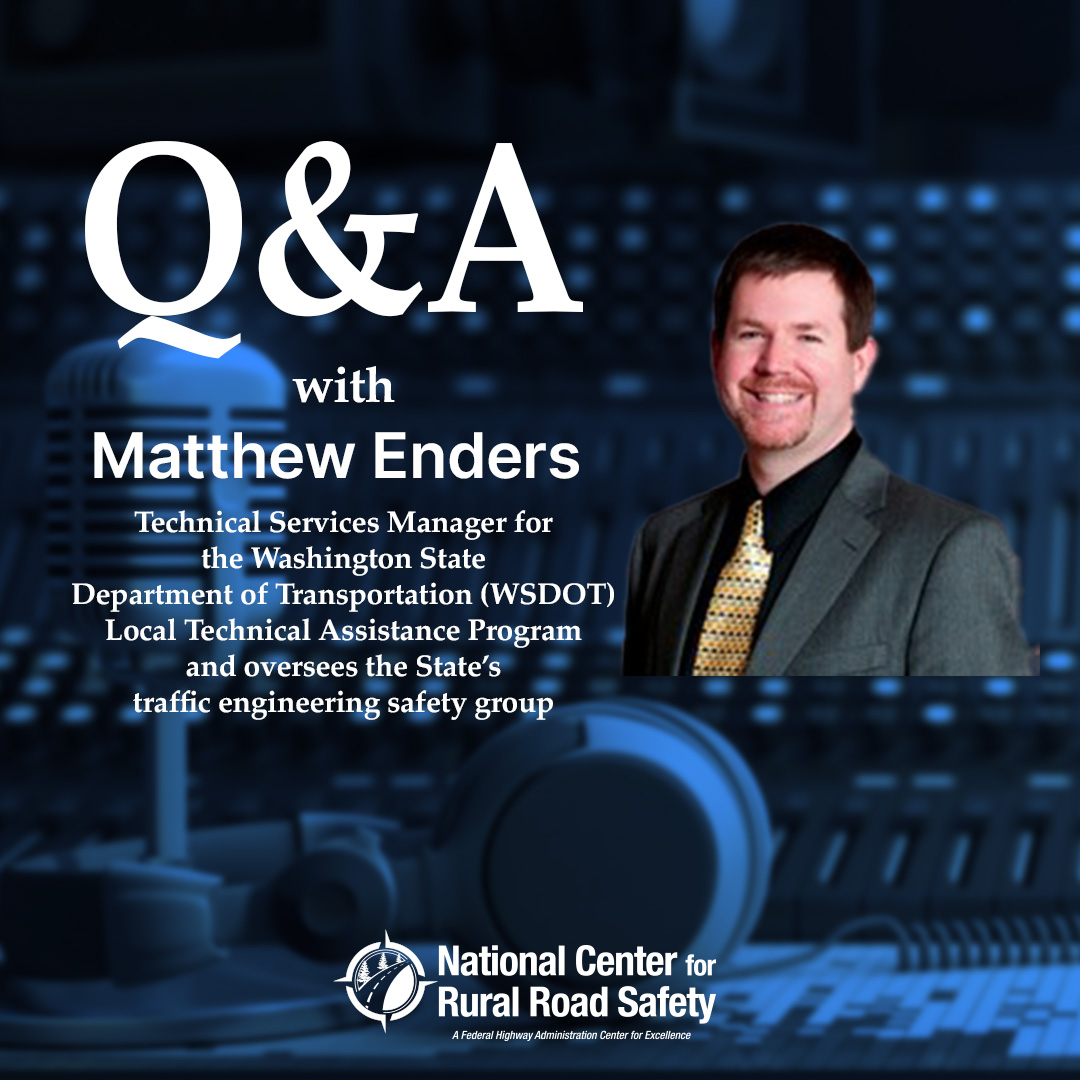Matthew Enders is the Technical Services Manager for the Washington State Department of Transportation (WSDOT) Local Technical Assistance Program and oversees the State’s traffic engineering safety group. In this conversation, Kevin talks with Matthew about the challenges of Washington’s rural roadways and how WSDOT met those challenges through comprehensive efforts such as road safety plans, the systemic approach, and being proactive. We’ve identified and summarized five prominent questions and responses from the interview.
Listen to the full episode and access resources here: https://ruralsafetycenter.org/home-safely-podcast/#enders
Q&A
Q: Tell everybody a little bit about yourself and your job.
A: I’ve been doing this kind of work for over 25 years. I started my career in traffic engineering—working on signal timing, roundabout operations, and some corridor safety projects—and that’s where I found how much I enjoyed the safety aspect of transportation. A few years in, I moved into our Local Programs Division at the Washington State DOT, where I now oversee the Traffic Engineering and Safety Group. My team works primarily with cities and counties to help them improve safety on their local roadways, though we also support tribes, ports, and other partners.
Q: Is your local programs setup unique? Is it rare to have that DOT-inside-a-DOT structure focused on helping locals?
A: Yes, it’s a little uncommon. There are other States that do similar things, but not many have a Local Programs group that mirrors the DOT to support local agencies. In most states, safety folks are responsible for all roads statewide. My role is unique because I focus specifically on local roads—which is a huge part of Washington’s system and where about two-thirds of our fatal and serious crashes happen.
Q: Tell everybody some of the unique safety challenges you see on your rural roads.
A: Our challenges really change depending on geography. In western Washington, it’s wet, green, and tree-covered—the most common thing people run off the road and hit is a tree. In eastern Washington, it’s dry and rural, with long, straight stretches of highway. There, speed, fatigue, and inattention are big factors. People often drive long distances between towns, so exposure time is high. Rural roads also have fewer forgiving roadsides, and when crashes happen, they can be severe.
Q: Talk about the local road safety plans you helped implement—what was the idea behind them and what did you see come out of that?
A: Back around 2012–2013, I noticed that every time we had a new funding cycle, local agencies were starting from scratch. We wanted to fix that by helping them develop local road safety plans—so they’d have a data-driven strategy to follow from one funding cycle to the next. We trained and encouraged each county to build its own plan, using its own knowledge of local roads. At first there was resistance because it was new, but by 2014, 31 of 39 counties had plans, and now 38 do. The best feedback I got was from counties saying, “We should have done this years ago.” They found it helped them identify simple, low-cost improvements—like signing upgrades—that ended up lowering fatal and serious crashes statewide by roughly 10–15% in just a few years.
Q: For people who don’t know, what is the Safe System Approach, and how are you applying it in Washington State?
A: The Safe System Approach means looking at safety as a whole system—not just one piece. We look at safer roads, safer vehicles, safer speeds, safer users, post-crash care, and even land use. It’s about addressing every factor that can reduce the chance or severity of crashes. In Washington, our Strategic Highway Safety Plan—called Target Zero—is built entirely around that philosophy. We’re now piloting Safe System–based local safety plans in some communities. They’re bringing together partners like law enforcement, health departments, schools, and other partners to look at every angle of safety. It’s a more holistic, community-driven way to get to zero deaths.
